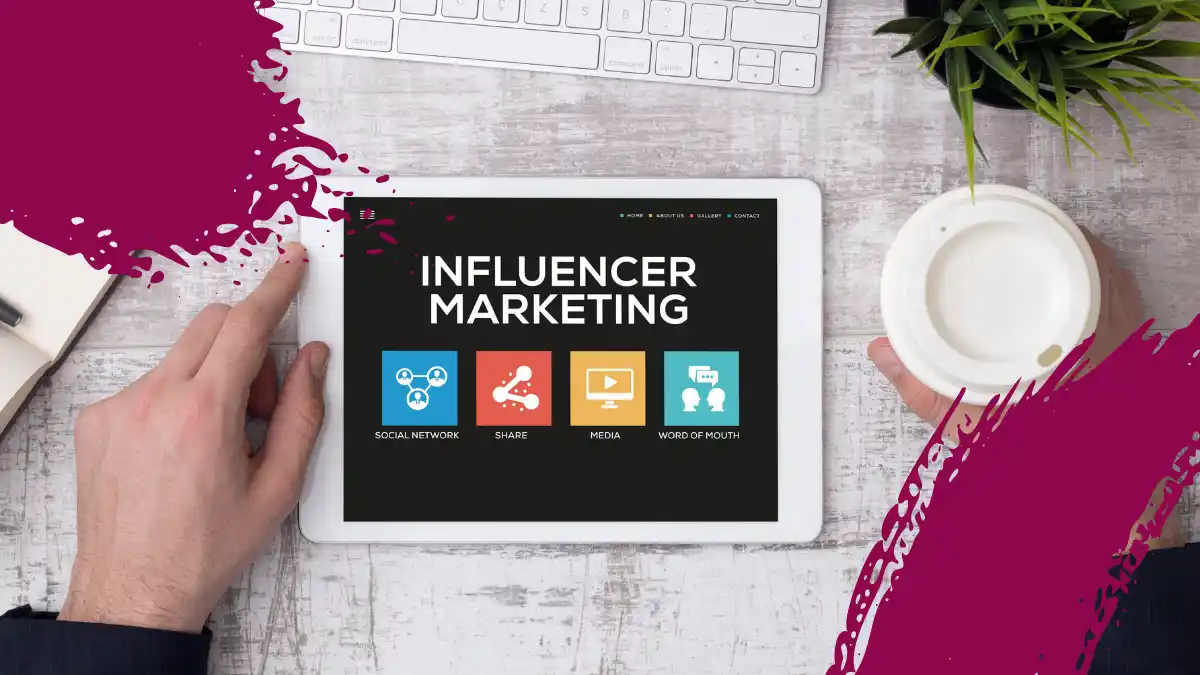It’s commonly believed that the impact of influencer marketing strategy is found only in markets whose products and/or services are aimed at the end consumer: business-to-consumer (B2C). It’s easy to find success stories where brands, especially in the lifestyle environment, promote their products through celebrities on networks like Instagram and TikTok, but…
Can these tactics be applied to specialized industries where the goal is to directly impact another business?
The answer is yes; B2B influencer marketing strategy represents a fantastic opportunity in communication and marketing strategies for specialized businesses looking to generate valuable relationships to enhance their brand in the online world.
What is influencer marketing?
Thinking of an influencer is usually associated with social networks and virtual environments; however, this term dates back much earlier and relates to people whose thought leadership inspires others with their ideas or actions. Now, imagine transferring that influence on social networks… it gives us the perfect formula to work on innovative and adaptive PR campaigns that allow us to connect with audiences and reach your target audience through multiple channels.
The origin of influencer marketing strategy dates back to the emergence and growth of social networks. As social platforms like YouTube, Instagram, and X gained popularity, so did users who stood out for their ability to influence the opinions and behaviors of their followers.
The term influencer was adopted to describe these people who had considerable influence on social networks. As users began to follow and trust these online personalities, brands saw an opportunity to promote their products or services through them.
Why influencer marketing is a key strategy?
Over time, influencer marketing strategy has become an established and recognized marketing approach. It has evolved to transform the digital presence of brands, with the emergence of new social media platforms and the diversification of influencer types. Including celebrities, niche experts, as well as nano and micro-influencers; becoming one of the trends in the field of public relations as they can help reach specific audiences and generate greater engagement and loyalty from consumers.
Did you know?
- 89% of marketing professionals consider that the ROI of influencer marketing is comparable or superior to other marketing strategies, so influencer marketing generates a high return on investment (ROI). (Influencer Marketing Hub).
You probably already knew this! However, the crucial point here is to understand what it really means to influence from a thought leadership perspective and that not necessarily many followers guarantee the engagement you’re looking for.
To recap, using influencers is based on partnerships with people who have built a digital community (through their contextual credibility or the reach they have with their followers) aligned with certain brands’ styles and values. Don’t forget that you can rely on a valuable ally to successfully manage these relationships.
The importance of generating and distributing valuable content
Previously, with the help of PR, brands used to gain coverage in traditional media, but with the digital revolution, Digital PR tactics are now needed to support the management and optimization of valuable content, effectively communicating key messages, sharing relevant information, gaining visibility, and consolidating the brand’s reputation.
A fundamental part of the work that an influencer does in this sense lies in collaborating with the brand to create and publish multimedia and valuable content for audiences. From videos in different formats (reels, TikTok, Instagram Stories), to written publications or even audio, as is the case with podcasts.
How to define your ideal influencer?
While metrics such as reach are a fundamental factor in classifying someone as an “influencer,” guiding ourselves solely by the size of their community would be a serious mistake. “Macro-influencers” or celebrities are the ideal channel if our goal is to reach a large number of people.
This may seem quite attractive if we link the benefits of celebrities with a strictly quantitative sense, but this does not always translate into “action” by the impacted people. When we talk about niches with very particular traits, it’s ideal to adopt specialized profiles; these frequently present smaller communities, but with a profound sense of identification regarding the topics addressed. In the marketing world, we usually classify them as “micro-influencers,” who are open to doing organic work if they share the values and innovations of a brand.
Paid vs. Organic influence in B2B and B2C markets
Paid and organic influence strategies differ significantly. Paid influence typically involves financial compensation, while organic influencers build relationships with brands through shared values and expertise.
An effective influencer collaboration strategy must balance both approaches. Celebrities help achieve immediate visibility, while micro-influencers generate deeper, long-term engagement with their communities. Many brands now integrate both tactics to maximize reach and credibility.
Connection with the brand
Getting an influencer to reflect brand values is a challenge in this industry, which is why the connection these profiles can have with those products or services we seek to position is vital. Many organic micro-influencers tend to get more involved with brands and their processes, from knowing the company’s philosophy to collaborating in defining objectives.
Influencer marketing strategy: A valuable PR asset
Various sources assure that digital channels like Instagram and TikTok are ideal for B2C brands due to their visually attractive and viral content. However, we have had experiences of B2B brands exploring TikTok to increase visibility.
In B2B influencer marketing approach, opportunities arise in networks like X, Facebook groups, and LinkedIn. Additionally, platforms like Spotify and blogs play an essential role due to their ability to address topics in a more detailed manner.
So… Can we say that the paid influencer marketing strategy is exclusive to the B2C sector and the organic one for B2B? No! The reality is that, although trends exist, influencer strategies do not discriminate between B2C or B2B markets. What truly matters is understanding what you want to communicate and what you want to achieve.
Why B2B micro-influencers are the ideal option to boost your brand
When it comes to boosting your brand, B2B micro-influencers offer two compelling reasons why they should be your top choice:
Dominant specialized markets
B2B micro-influencers excel in specialized markets. By nature, they are experts in their field, equipped with experience and knowledge to understand the key concerns of the markets in which they operate. This expertise allows them to connect deeply with their audiences and establish credibility.
Reaching the target audience
B2B micro-influencers are individuals who share similar characteristics with their audiences. They possess excellent decision-making skills and are adept at building positive relationships. As a result, they know exactly “what and how” to communicate using formats and messages that capture their audiences’ interest.
Final Thoughts
Incorporating influencer marketing strategy into your PR plan is a valuable way to position your organization and create an optimized public relations approach. This influencer collaboration strategy benefits both B2B and B2C brands, as it allows you to generate online visibility in sectors where your value proposition directly impacts the business environment.



